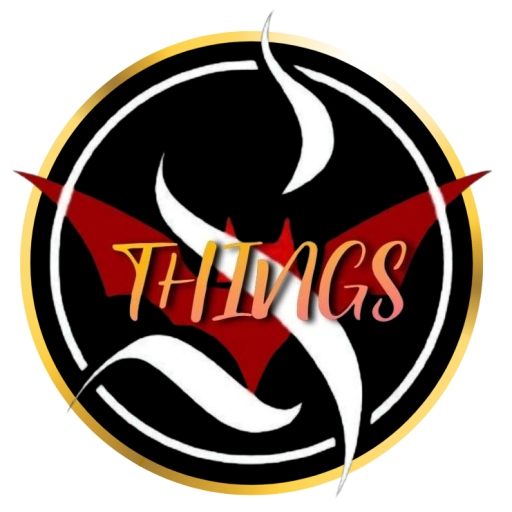Top 10 Ancient Egyptian Symbols That Shock the World with Their Hidden Secrets

Ancient Egypt history is full of mysteries, but none capture the imagination more than the symbols carved on temples, tombs, jewelry, and papyrus scrolls. These signs were more than decoration. They were codes of life, death, power, and the divine. When we study them, we unlock how Egyptians viewed the afterlife, the gods, and their place in the universe.
In this guide, Strange Happening explores the top 10 Ancient Egyptian Symbols that continue to shock modern researchers. Each one carries stories from ancient Egyptian history, mythology, and rituals. These Egyptian symbols still fascinate because they shaped not just religion but also medicine, astronomy, and politics.
To make this deep dive useful, we’ll use important research references, avoid speculation, and stick to proven history. Let’s uncover these ancient symbols step by step.
Table of Contents
1. The Ankh — Key of Life
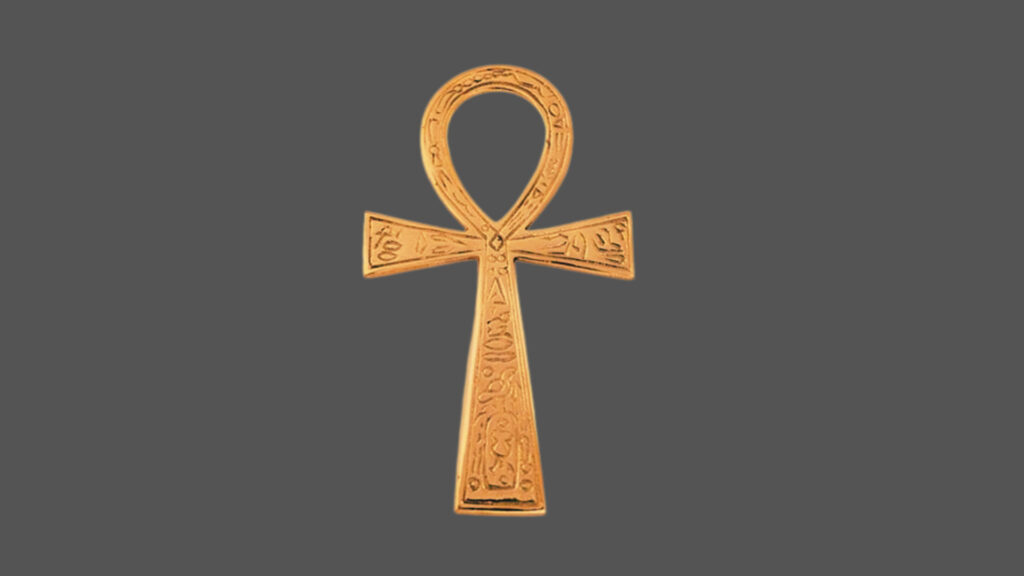
What It Is
The Ankh is one of the most famous Ancient Egyptian Symbols. It is shaped like a cross with a loop on top, often called the “key of life” or “cross of life.” It represented existence, vitality, and immortality. Beyond being a religious emblem, it became a universal sign of both physical life on earth and spiritual life in the afterworld. In Egyptian art, gods are often shown holding the Ankh near the nose of a pharaoh, symbolizing the breath of life itself.
When and Where
- First appeared in the First Dynasty (c. 3100 BCE).
- Found in temples, tombs, amulets, and papyrus paintings.
Purpose and Who Used It
- Gods are shown handing it to pharaohs as a gift of eternal life.
- Carried by kings as proof of divine authority.
- Buried with mummies for protection in the afterlife.
Real Facts and Myths
- Some historians link its shape to a sandal strap.
- Others see it as a fertility symbol tied to Isis.
- Early Christians in Egypt adopted it as the crux ansata.
Why It Shocks
Because such a simple design became the universal sign of eternal existence. Even today, the Ankh is one of the most recognized Egyptian symbols.
Reference: Wikipedia – Ankh
2. Eye of Horus — Symbol of Healing and Power
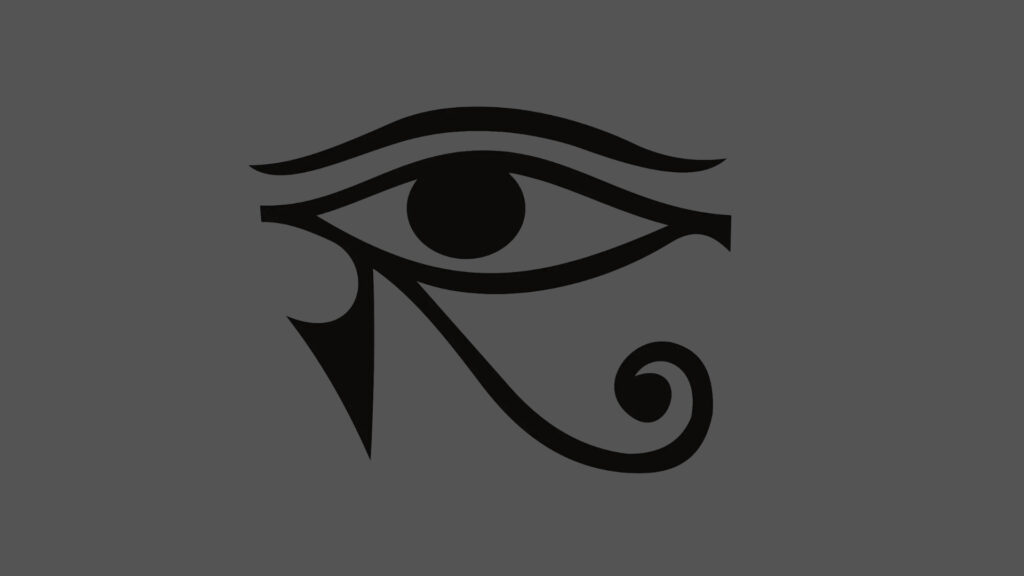
What It Is
The Eye of Horus is one of the most recognized ancient Egyptian symbols, shaped like a stylized human eye with distinctive markings. It stood for healing, protection, sacrifice, and divine strength. In ancient Egyptian history, the symbol was rooted in the myth of Horus, the falcon-headed god, who lost his eye in battle with Set. The eye was later restored by the god Thoth, and so it became a sign of renewal and wholeness.
The Eye of Horus was not just a religious mark. It played a role in medicine, mathematics, and astronomy. Parts of the eye were linked to fractions used in ancient Egypt history, showing how myth and science were deeply connected. Amulets of the Eye were worn by both royals and commoners, placed in tombs to guard the dead, and painted on ships to protect travelers.
When and Where
- Rooted in the myth of Horus and Set.
- Used widely since the Old Kingdom (~2600 BCE).
Purpose and Who Used It
- Worn as amulets for health and safety.
- Painted on tombs to protect the dead.
- Used in rituals by priests.
Real Facts and Myths
- The parts of the Eye of Horus match Egyptian mathematical fractions.
- It was linked with the moon, symbolizing restoration.
Why It Shocks
It connected religion, science, and medicine all at once. No other ancient symbols combine myth and math like the Eye of Horus.
Reference: Wikipedia – Eye of Horus
3. Djed Pillar — The Backbone of Stability
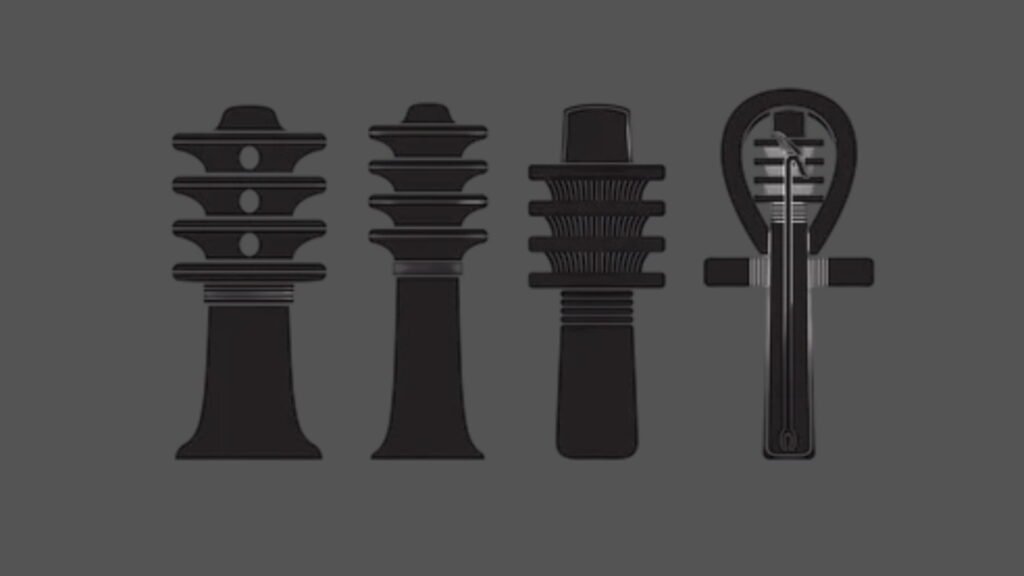
What It Is
The Scarab Beetle was a sacred creature in ancient Egyptian history, symbolizing rebirth and transformation. It was linked to Khepri, the morning form of the sun god Ra, who was believed to roll the sun across the sky each day just as beetles roll balls of dung.
Scarab amulets became some of the most popular Egyptian symbols, placed on mummies to secure safe passage into the afterlife. Heart scarabs often carried inscriptions from the Book of the Dead, offering magical protection. From royal tombs to the belongings of common people, scarabs served as a reminder that life could always be renewed, both on earth and beyond death.
When and Where
- Dates back to pre-dynastic times (before 3100 BCE).
- Used throughout ancient Egyptian history.
Purpose and Who Used It
- Linked to Osiris, the god of the afterlife.
- Pharaohs raised the Djed during ceremonies to secure stability.
Real Facts and Myths
- May have begun as a fertility pole or tree trunk.
- The annual “Raising of the Djed” was a royal ritual of renewal.
Why It Shocks
It wasn’t just political stability but cosmic balance. Ancient Egyptian beliefs tied the universe itself to this one pillar.
Reference: World History Encyclopedia – Djed
4. Scarab Beetle — Rebirth and Protection
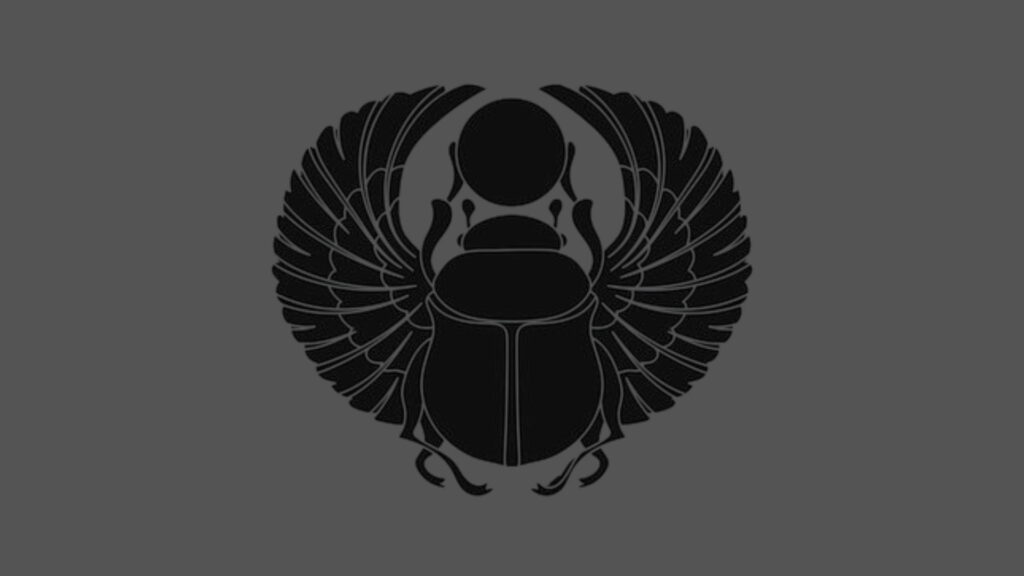
What It Is
The Scarab Beetle was among the most powerful Egyptian symbols in ancient Egypt history. Inspired by the dung beetle that rolled balls of earth, it symbolized rebirth, transformation, and the daily rising of the sun.
Carvings of scarabs were used as amulets and seals from as early as 2000 BCE. They were placed in tombs to guide souls through the afterlife and protect against evil. The rolling motion of the beetle was linked to the sun god Ra, who was believed to push the solar disk across the sky every day.
In ancient Egyptian history, the Scarab became a universal emblem of creation and eternal life. Pharaohs often wore scarab seals, and ordinary people also carried them for protection. The symbol reflects how Egyptians connected the smallest creature with the greatest cosmic forces.
When and Where
- Popular from the Old Kingdom (c. 2300 BCE).
- Found in tombs, jewelry, and as seals.
Purpose and Who Used It
- Scarab amulets placed on mummies symbolized rebirth.
- Heart scarabs bore protective spells from the Book of the Dead.
Real Facts and Myths
- Mass-produced scarabs carried prayers, names, and magical words.
- Commoners and royalty both used them.
Why It Shocks
A simple insect became the ultimate promise of eternal life. Scarabs are still the most collected Egyptian symbols today.
Reference: Britannica – Scarabs
5. Ouroboros — The Snake of Eternity
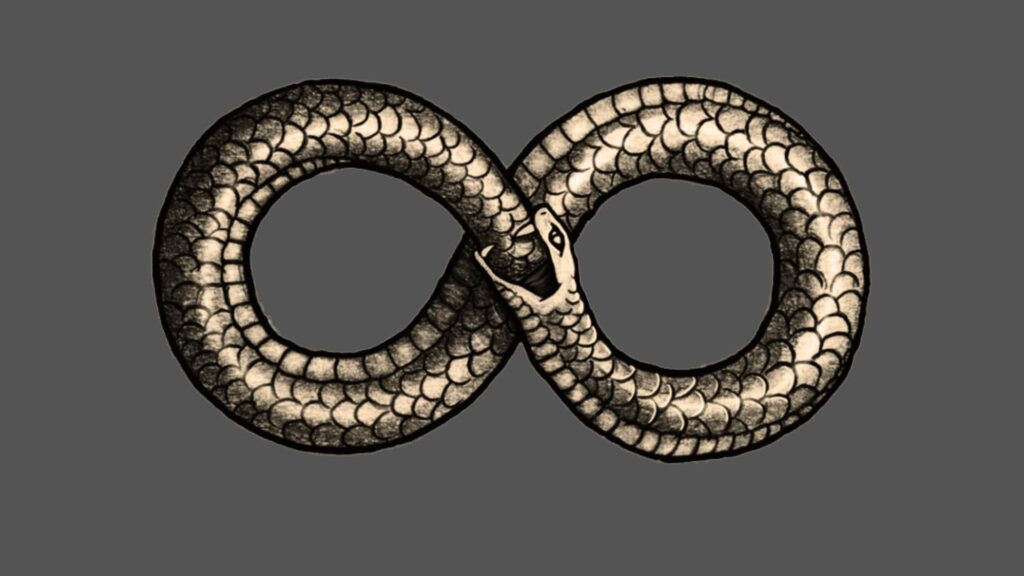
What It Is
The Ouroboros, a serpent swallowing its own tail, was one of the most mysterious ancient symbols connected to ancient Egyptian history. It represented eternity, cycles of destruction and renewal, and the endless flow of time.
Found in tombs and funerary texts, the Ouroboros often appeared in circular form, enclosing the world or the sun. In Egyptian belief, it illustrated how the universe constantly renewed itself, never truly ending. This idea spread beyond ancient Egyptian culture, later influencing Greek philosophy, alchemy, and mystical traditions.
The Ouroboros shows how the Egyptians saw death not as final, but as a passage back into the cosmic cycle of rebirth, tying human destiny to the eternal rhythm of the universe.
When and Where
- First appears in the tomb of Tutankhamun (14th century BCE).
- Later adopted by Greek and alchemical traditions.
Purpose and Who Used It
- Symbolized eternal time and rebirth.
- Used in funerary texts to promise eternal existence.
Real Facts and Myths
- Connected to the Egyptian concept of neheh (cyclical time).
- Seen in the Enigmatic Book of the Netherworld.
Why It Shocks
It predicted modern philosophical ideas of infinity long before other cultures.
Reference: Wikipedia – Ouroboros
6. Was Scepter — Power Over Chaos
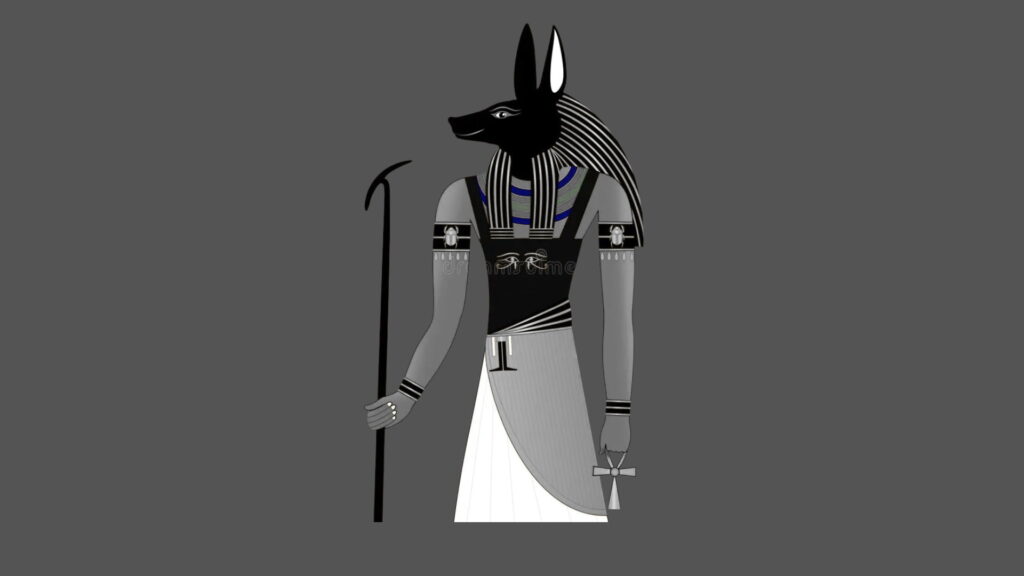
What It Is
The Was Scepter was one of the most important ancient Egyptian symbols, representing authority, control, and divine power. It had a long staff with a forked base and an animal-shaped head, often linked to gods and kings.
Dating back to around 3100 BCE, it was carried by deities like Anubis and Set, as well as pharaohs. The scepter was not just ceremonial; it symbolized the ruler’s ability to maintain order in both the earthly and spiritual worlds. In ancient Egyptian history, it was buried with kings to ensure their continued dominance in the afterlife.
The Was Scepter highlights how power was deeply spiritual in ancient Egypt, tied not only to governance but also to maintaining harmony with the divine.
When and Where
- Dates back to the First Dynasty (~3100 BCE).
- Seen in statues and temple carvings.
Purpose and Who Used It
- Carried by gods like Set and Anubis.
- Symbolized control over chaos and evil.
Real Facts and Myths
- The forked base may mean life and death duality.
- The animal head is linked to the mysterious Set-animal.
Why It Shocks
Because it shows rulers claimed power not only on earth but over cosmic order.
Reference: Wikipedia – Was Scepter
7. Lotus Flower — Symbol of Creation
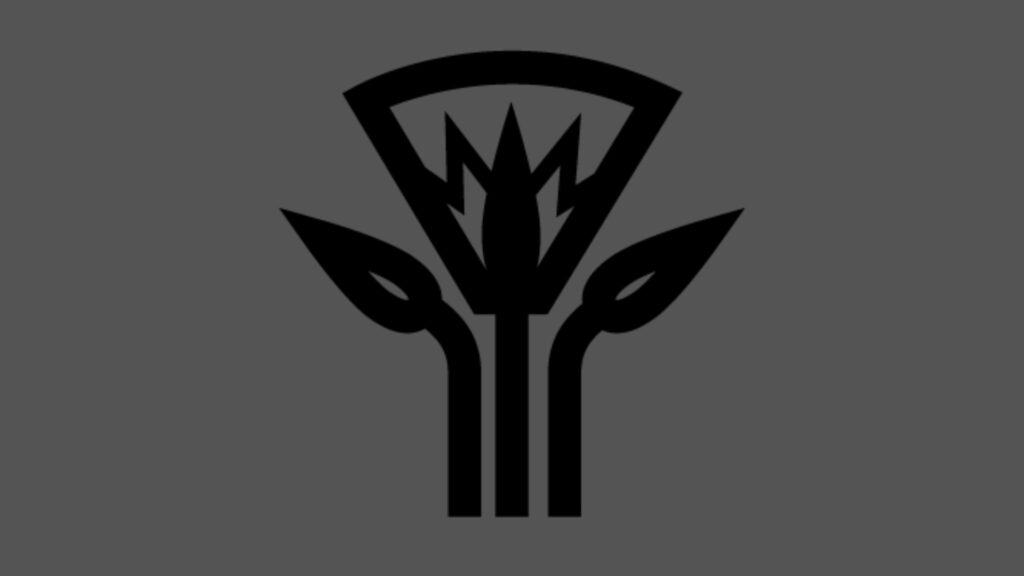
What It Is
The Lotus Flower is one of the most beautiful and sacred ancient Egyptian symbols. It stood for rebirth, purity, and the cycle of the sun. The flower’s unique habit of closing at night and reopening in the morning made it a powerful emblem of creation and renewal.
Archaeological findings show the Lotus was present in art and temple carvings from as early as the Old Kingdom period in ancient Egypt history. It often appeared alongside gods like Ra and Osiris, symbolizing resurrection and eternal life. The Lotus was also linked to the Nile, since it grew abundantly along its waters, making it central to both religion and daily life.
In ancient Egyptian history, the Lotus was more than a plant. It was a reminder that life could rise again from darkness, an idea reflected in funerary rituals and spiritual beliefs.
When and Where
- Found in ancient Egyptian art since 2500 BCE.
- Painted on tombs, temples, and jewelry.
Purpose and Who Used It
- Associated with the sun god Ra.
- The lotus opened at sunrise, closed at night, symbolizing renewal.
Real Facts and Myths
- Myth says the sun emerged from a cosmic lotus.
- Also used in medicine, perfume, and rituals.
Why It Shocks
Because a flower became the blueprint of cosmic rebirth.
Reference: Egypttoursportal – Lotus
8. Tyet Knot — The Knot of Isis
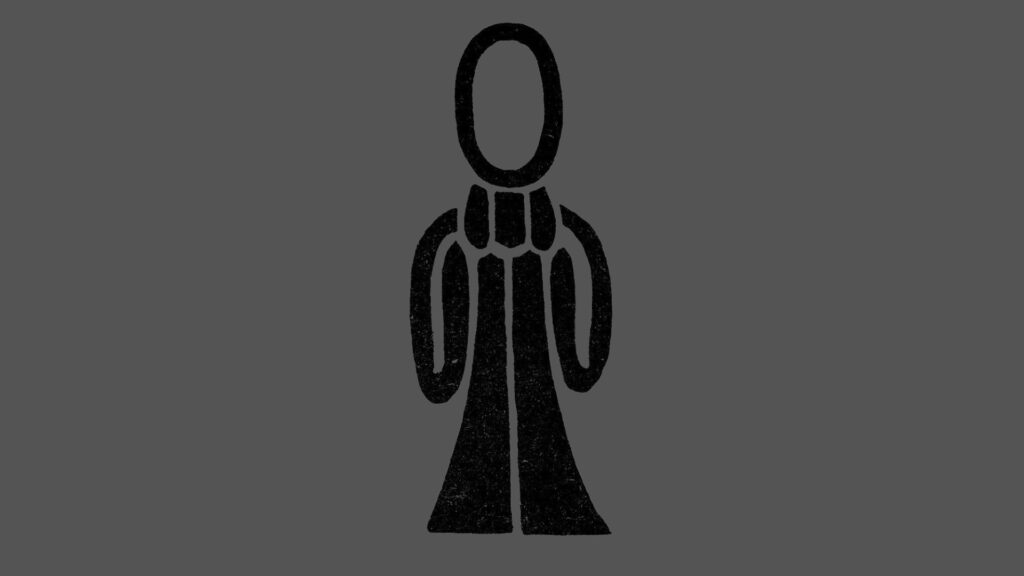
What It Is
The Tyet Knot, also called the Knot of Isis, was a powerful ancient Egyptian symbol of protection, healing, and feminine strength. It looks similar to the Ankh but with arms curving downward, often interpreted as a knotted cloth soaked in blood.
Archaeologists have traced its use back to the New Kingdom period of ancient Egyptian history, around 1550 BCE. The Tyet was closely tied to the goddess Isis, who embodied magic, motherhood, and safeguarding the dead. Amulets of the Tyet were placed in burial wrappings to ensure the deceased received Isis’s protection in the afterlife.
The Tyet Knot reflects how ancient Egypt blended spirituality with daily practices. People wore Tyet amulets for health and safety, while priests used them in rituals invoking divine protection. Its presence in tombs proves how deeply the Egyptians trusted its power to guard the soul on its eternal journey.
When and Where
- Appeared in the New Kingdom (~1550 BCE).
- Found in tombs across ancient Egyptian history.
Purpose and Who Used It
- Linked to Isis, goddess of protection.
- Amulets placed with the dead for healing.
Real Facts and Myths
- Often made of red stone, representing Isis’s blood.
- Tied to motherhood and resurrection.
Why It Shocks
Even pharaohs relied on this knot for divine safety.
Reference: Wikipedia – Tyet
9. Ba Bird — The Human Soul
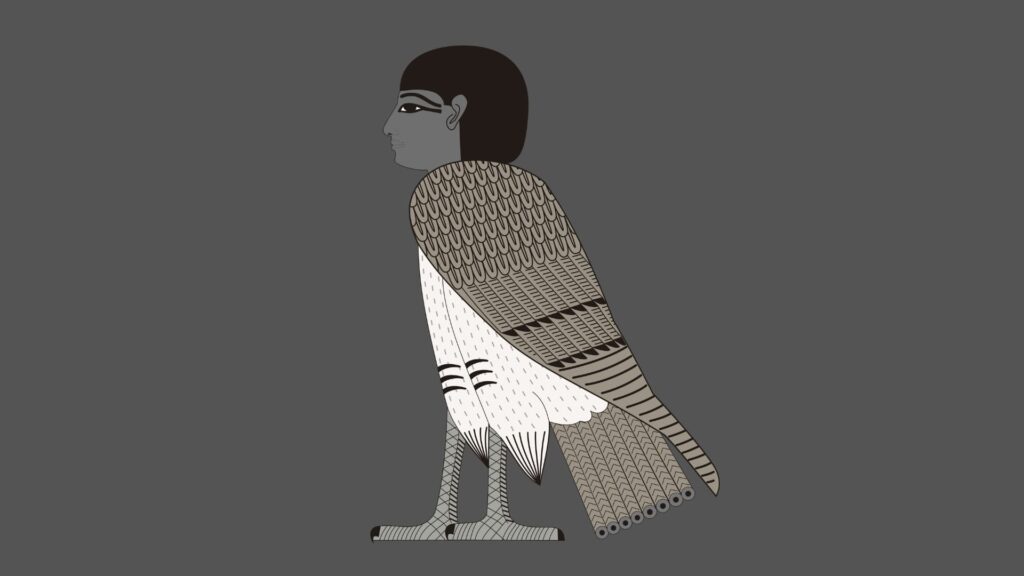
What It Is
The Ba Bird was one of the most spiritual ancient Egyptian symbols, representing the soul that lived beyond the body. Depicted as a bird with a human head, it symbolized individuality, personality, and the freedom of the spirit after death.
References to the Ba appear as early as the Old Kingdom in ancient Egyptian history, around 2600 BCE. Egyptians believed every person had both a Ka (life force) and a Ba (soul essence). After death, the Ba was free to leave the body, travel between the worlds, and return to the tomb whenever it wished.
Amulets and carvings of the Ba Bird were placed in graves to ensure the soul could recognize its body and achieve eternal life. This reflects the broader philosophy of ancient Egypt history, where death was not an end but a continuation of existence in another form.
The Ba Bird shows how deeply Egyptians valued individuality, believing each soul carried its own personality even in the afterlife.
When and Where
- Found in funerary texts of the New Kingdom (1500 BCE).
- Illustrated in the Book of the Dead.
Purpose and Who Used It
- Represented individuality and freedom of the soul.
- Could leave the tomb by day and return at night.
Real Facts and Myths
- Unlike Western “soul,” the Ba needed the body to survive.
- Amulets in the form of Ba birds are found in tombs of kings.
Why It Shocks
Because the Egyptians believed souls could interact with the living world.
Reference: The Metropolitan Museum of Art- Ba Bird
10. Winged Sun Disk — Protection of the Gods
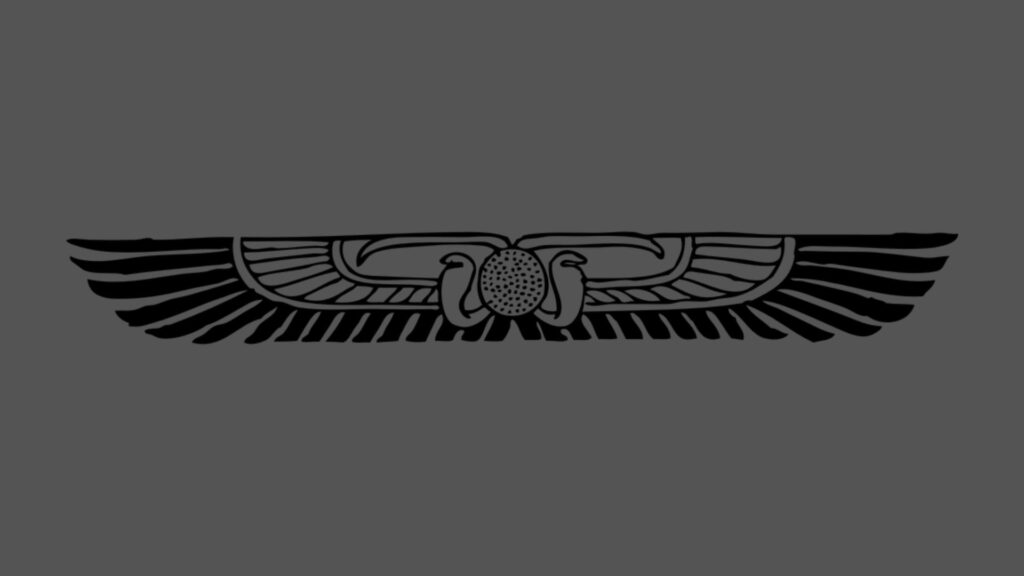
What It Is
The Winged Sun Disk is one of the most striking ancient Egyptian symbols, combining the solar disk with outstretched falcon or hawk wings. It stood for divine protection, victory, and the eternal power of the sun.
Its earliest known use dates back to the Old Kingdom in ancient Egypt history, later becoming a common feature in temple carvings, tombs, and protective amulets. The disk represented the sun god Ra, while the wings symbolized his ability to soar across the heavens and shield both the pharaoh and the land.
According to ancient Egyptian history, the Winged Sun Disk was also used during coronation rituals and battles, emphasizing that the king ruled under divine authority. It was often carved above temple entrances, marking the threshold as sacred and guarded by the gods.
The Winged Sun Disk shows how power and spirituality were inseparable in ancient Egypt, serving as a reminder that divine light and protection guided both rulers and the people.
When and Where
- Used from the Old Kingdom onward.
- Placed over temple doors and monuments.
Purpose and Who Used It
- Represented Ra, the sun god, and divine kingship.
- Used as a protective emblem at sacred entrances.
Real Facts and Myths
- Linked to Horus of Edfu defeating enemies.
- Spread to Mesopotamia and Persia.
Why It Shocks
Because it shows Egyptians used symbols as shields, not just decorations.
Reference: Wikipedia – Winged Sun Disk
Key Takeaways
- Ancient symbols were central to ancient Egyptian history, shaping both daily life and spiritual beliefs.
- These signs influenced religion, governance, medicine, and even early science.
- From the Ankh to the Winged Sun Disk, each symbol carried meaning that defined how Egyptians understood life, death, and the universe.
- The study of ancient Egyptian symbols today helps us unlock the mysteries of a civilization that continues to inspire and astonish.
- As Strange Happening explores these truths, it reminds us that symbols are not just artifacts but living keys to understanding human history.
Final Word from Strange Happening
Strange Happening believes the study of Ancient Egyptian Symbols is more than a history lesson. These designs were living ideas that carried the weight of life, rebirth, and cosmic order. By exploring ancient Egypt history and decoding Egyptian symbols, we see how one of the greatest civilizations tried to answer humanity’s biggest questions.
Even today, these ancient Egyptian mysteries remind us that the search for meaning has always been part of our story.
About the Author
Mubashir Razzaq, author of Strange Happenings, explores mysteries, hidden truths, and unexplained phenomena from history and beyond. His work focuses on uncovering facts that connect the past with present curiosity, making complex stories simple, deep, and engaging for readers worldwide.

